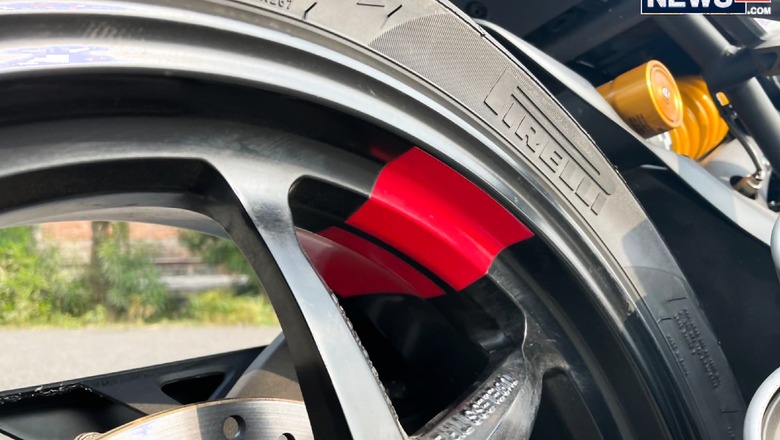
views
Spoked wheels or alloy? What is better for your two-wheeler? Well, to an extent, this depends on personal preference as both the wheel options have their own advantages and disadvantages. For the longest time, spoke wheels remained the unchallenged king until alloy wheels made their debut in the 1970s. With advancements in motorbike technology and design, a large group of manufacturers shifted to alloys as it is cheaper and allows bikes to run without tubes. However, spoked wheels aren’t completely out of the picture yet. Here we take a look at key aspects of both the wheels options and compare their advantages and disadvantages for you.
Spoked Wheels
While many consider spoked wheels an old technology, they are still are preferred by manufacturers of off-road bikes due to their durability. Popular bikes like Royal Enfield Himalayan, Hero XPulse 200 use spoked wheels instead of alloys. This trend can also be seen on expensive off-road motorbikes likes Triumph scrambler 1200 XC. Having spoked wheels allows bikes to handle sharp bumps easily as the shock gets transferred through the wheels before being absorbed by the suspension. Spoked wheels are designed to bend, flex and handle shock while avoiding a breakdown. Additionally, this wheel option is easily repairable and can be corrected for minor faults without much expense.
ALSO READ: Saleen Teases Electric Supercar Plans with Slick Video Promo: Watch Here
While the advantage list is long, there are also certain drawbacks of using this vintage technology. Spoked wheels on most bikes use inner tubes that makes puncture fixing a complex process. In off-road conditions, punctures can be a regular hassle and this may add a burden for the rider. While there are tubeless options of spoked wheels, they are slightly on the higher side of pricing.
Also Watch:
Alloy Wheels
Alloys are a slightly newer technology and are quite popular on bikes around the globe. This larger demand has brought the manufacturing significantly down making it a more viable option in terms of pricing. While alloys were initially introduced on performance-oriented and superbikes, it off late has become a regular offering on budget-friendly motorbike options. Since they are single cast, and rigid, alloys offer better stability at higher speeds. The rigidity aspects help them facilitate higher output of horsepower and torque with ease as well. Having alloys facilitate the easy use of tubeless tyres that makes the puncture fixing process hassle-free.
However, since alloys are rigid and can’t bend, they tend to break or crack due to sudden jerks at high speeds. In most cases, repairs of alloys aren’t possible and buyers have to replace them with a new one.
Read all the Latest Auto News here




















Comments
0 comment